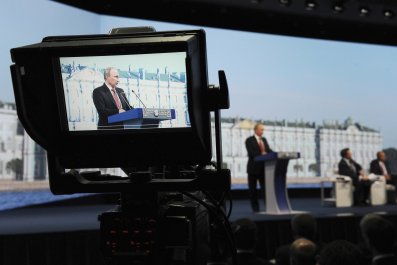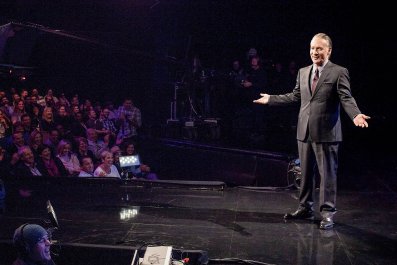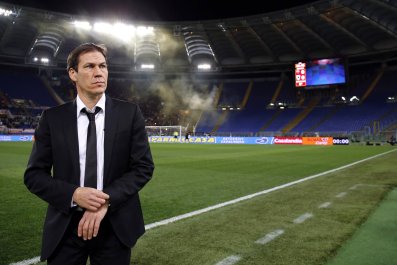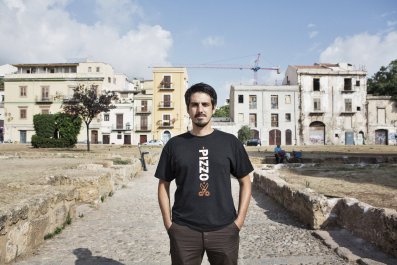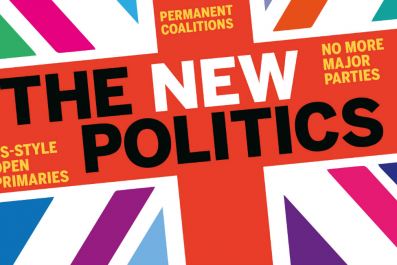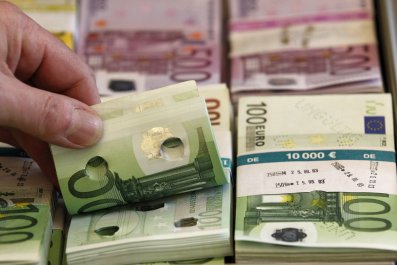As the polling booths are dismantled and the dust settles across the country, one thing is gloriously clear to us. We are a Scotland rebooted, energised, empowered and – above all, after decades of feeling ignored and discounted by London – heard.
That separatism was on course for a stunning victory, we knew for certain 10 days before the vote. As one Yes supporter put it to me on the morning of that Monday, September 8th, when the British establishment went into panic mode, "We're on the podium; we've done it. Now it's just a question of whether we win silver or gold." Independence or home rule – one or other was guaranteed to be Scotland's future, more than any realist in Scotland could have dreamed when the campaigning began two years ago.
The Scottish Spring, like the other democratic upheavals of recent years, was at heart a huge mobilisation of people power: it saw 97% of the electorate register to vote and an 86% turnout, a record in modern British politics. It has delivered on its promise – Scotland will be a fairer and more democratic place. All that with hardly a window smashed; by my count only three eggs were thrown (at the Labour MP Jim Murphy, at a rally in Glasgow). A revolution with no riot police – perhaps the first in modern history. We Scots have a lot to smile about.
On that panicky Monday, London woke up to the fact that the 307-year-old Union was on life-suport. The previous day's Sunday Times YouGov poll showed the Yes (to independence) movement ahead for the first time – not just in the campaign, but in 35 years. It seemed that all the don't knows, who for months had been scratching their heads (or, simply, getting on with more pressing things) had turned into Yeses. It surprised fewer in Scotland – we knew how the wind had been blowing.
In Whitehall, the alarm was sounded: the rival party leaders Nick Clegg, Ed Miliband and David Cameron cancelled all engagements and headed north. With them they brought gifts – more than shiny things for simple natives. Each of the leaders has outdone the other in the last two weeks to offer fancier prizes: "devo max", tax-raising powers, complete control of domestic spending, even "home rule", as former Labour prime minister Gordon Brown put it, with Cameron's approval. All of this by January 2015.
The irony made our heads spin. The cavalry was speeding north to contain the damage by conceding defeat. They might save the Union, but they were giving away powers that would leave the UK a shell of a nation, offering far more than the Scottish National party strategists believed could be won just two years ago.
And the fault lay with one man – David Cameron. "Don't break up our family of nations," he pleaded at an Edinburgh press conference nine days before the vote. Cameron would rather people kicked the "effing" Tories than end the Union. We all knew that he was pleading for his political life: his grotesque tactical error had brought this humiliation about. Back in 2012 when the rules for the vote were drawn up, Cameron gambled. That was a disaster.
Cameron, whose Scottish political base hardly exists, was advised by Scottish Tory grandees, such as ex-minister Sir Malcolm Rifkind and the England-based right-winger Andrew Dunlop (who as an adviser to Margaret Thatcher had helped bring the hated poll tax to Scotland). Heeding these out-of-touch men, the Prime Minister decided there was a chance of victory by knock-out. So, in negotiations over the vote, he made an extraordinary offer: if the SNP, Scotland's ruling party, dropped its insistence on a two-question vote – independence or more devolution – they could have everything else. Polls at the time showed that "devo plus", a gentle step towards federalism, is what the great majority of Scots would have voted for. It's what I would have voted for. It would have been a safe bet, for both sides.
But Cameron's decision was that the vote should just be in, or out. And, to get that, he conceded to the SNP the right to frame the wording on the ballot themselves (allowing the nationalists to have the distinct advantage of campaigning for Yes) and giving 16 and 17-year-olds the vote. He also disenfranchised a core constituency of Labour-leaning urban voters, who would have fought for the Union if they had been allowed to vote for more devolution. Silenced, angry, we became the motor behind a cross-Scottish move towards Yes.
Cameron made a terrible error and so did the Chancellor of the Exchequer, George Osborne, but the truth is that the Better Together campaign threw away a whopper of an advantage.

HOW COULD THEY LOSE?
Looked at a year ago, this contest was a fist-fight against a one-armed man: how could the status quo possibly lose?
The economics argument against independence was in the bag – no serious analysis gave a divorced Scotland's financial prospects more than a half-hearted outlook, and most were downright doom-laden. The remaining oil would clearly not finance Scotland's metamorphosis into a Norway. There was no comfortable solution to the key matter of which currency Scotland would use, and businesses were queuing up to give independence a thumbs down. A free Scotland would be poorer in its formative years – and it might not even have the European Union to lean on.
No wonder the No campaign was 20 points or more ahead in the polls for most of 2013. The mainstream media, both Scotland and London-based, were unanimously pro-No. Even the young, even the 16 and 17-year-olds for whom the SNP had fought to get a vote, were heavily anti-independence. So were most women. Complacency in the campaign was inevitable.
Perhaps because of this, the No camp went wrong very early on. By the end of last year, everyone in media or politics here – and Scotland's a small, connected place – knew that the cross-party coalition Better Together was under-funded and deeply riven. Bitter Together was the joke, and it came from the inside.
The operation, based in Glasgow, was a mess – the social media effort was left in the hands of an intern at the beginning of 2014 – and fund-raising had stalled. Stories of the campaign begging for money from any aristocrat or businessman it could contact abounded. Efforts to recruit creative talent were blocked by budget problems, and goodwill among potential volunteers in advertising and marketing dribbled away. It was clear even then that Yes had all the best tunes (and all of Scotland's musicians and artists, most of its writers who dared to go public): the ideas and the momentum.
Lulled by the polls, people down South turned their attention to the other indepedence fight, with Ukip over Europe. My own friends in politics and journalism in London just didn't get the notion that there was a monster awakening, that the sweet smell of freedom might alone trigger a Scottish Spring. They couldn't, and this was the word I heard again and again, believe that Scotland would be "so silly". "Do the maths and grow up," was the message. It didn't convince me: I felt patronised. And that's not electorally effective, especially when you're dealing with a feisty small nation ready to fire up at any lack of respect.
But, while the No campaign failed to wake its masters until it was far too late, its key strategic mistake was to live up to its name – and be relentlessly negative. Again and again, we in the torn centre pleaded for it to come up with a passionate and positive defence of the Union, with a message that together things could only get better – but there was none. I don't believe there was a lack of desire, just of talent and creativity.
Also, of course, the three parties that had buried their hatchets to form the Better Together campaign could agree on very little, let alone strategy. The trump card, which everyone agreed would be needed to clinch the No vote, was to be a blueprint for a post-referendum Scotland that could take more responsibility for its own affairs. A draft was available for agreement a year before the vote – but the parties could not get themselves around the table to sign it. It took until May before any promises were made, and those came from each party individually – too quietly to be heard.
By late winter, Scots were bored by the No message. There's only so many times you can be told to stop complaining, and be satisfied with what you have. That hope of change is daft. But impatience with the negativity hadn't yet translated into Yes votes. It took the Chancellor of the Exchequer George Osborne to bring that alchemical shift about.
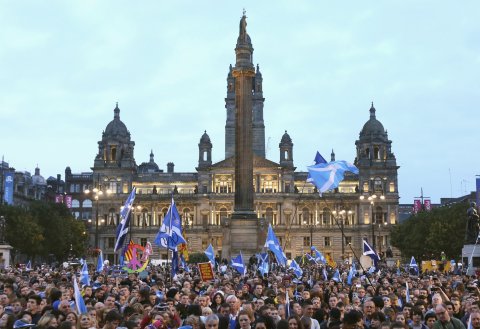
THE OSBORNE EFFECT
In February, with all the sensitivity of a mugger putting a boot in when the victim's already unconscious in the gutter, Osborne announced that the Treasury would rule out any currency union after independence. Why say that then, with the No campaign resting at a comfy 20% ahead in the polls?
At best it was a belt and braces move. To us, it looked unconstitutional, and it looked like bullying. That moment turned out to be the turning of the tide. Scots – bored, patronised, beaten over the head with statistics and scare-mongering from a political establishment with few democratic roots in Scotland – started to move towards Yes.
Osborne's threats did not scare us because we were all used to the pro-Union barking of the traditional print media. That was one of the independence campaign's advantages, along with the fact that Scotland's national press is now more bark than bite. The Scotsman no longer publishes its circulation figures, but it sells little more than 20,000 copies, reaching 0.5% of Scots.
Until the summer, newspapers were all anti-independence (and except for the Sunday Herald, remained so or stayed on the fence). So new media has stepped in, and more than filled the gap. Online news sites like Bella Caledonia, Newsnet Scotland and the Scottish Review have thrived and the debate moved onto Facebook and Twitter, engaging hundreds of thousands of people who had not had much previous interest in politics. In August alone, 118,000 registered to vote. Better Together never mastered social media – its @UK_Together Twitter account had 39,000 followers a week before voting, less than half @YesScotland's tally.
While No stayed dour and monolithic, the brilliance of the Yes campaign showed in the way it fostered fragmentation. During the summer, I could wander around a Scottish town and find a dozen pro-Yes stalls, representing everyone from the Scottish Socialist Party to Architects for Yes and Mums for Yes. National Collective, the creatives-for-Yes campaign, injected fun and inventiveness into the sloganeering and the rallies. The separatist church broadened – it included radical republicans, old socialists and anti-monarchists as well as the apolitical middle class. By mid-summer No stickers and posters were a rarity in Scottish towns – they might be ahead in the polls, but No wasn't cool at all.
Somehow, in all of this explosion of thought and debate, two important things happened. One was that the Alex Salmond and his SNP became a part of the movement, not the whole of it allowing many non-Nationalists to say with good heart, "I'm voting for an independent future, not for Wee Eck." And, of course, there were people like me, whose initial anger at being denied the chance to vote for devolution plus had flirted with Yes.
Utopianism is a more-ish brew. A relative who lives in remote rural Scotland, an ex-development worker in South Asia, said to me, "How often in history do we get this sort of chance? Without fear or pressure, with amazing resources, to remake a country? With the common good as the goal?" I had to nod to him. Perhaps the key to the unionist campaign's humbling is that it never answered these seductive visions with anything more exciting than, "Don't try to fix what ain't broken." Scotland asked for more – and got it.
Scotsman Englishman: Two Friends, One Thorny Argument, an in-depth ebook on the Scottish independence debate, is available now from Newsweek Insights.




